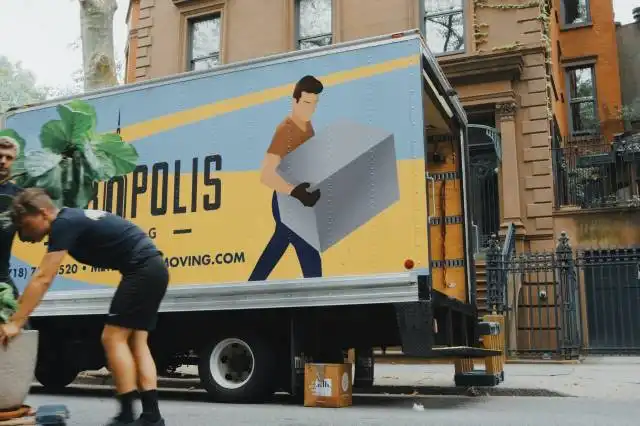Start a Junk Removal Business
Be the Junk Superhero: Your Guide to Starting a Junk Removal Business
| Updated


JUNK REMOVAL BUSINESS
Are you tired of immaculate homes and pristine environments? Come hang out in the mess! A junk removal business may be your golden ticket to entrepreneurial success. Your mission, should you choose to accept it, involves making numerous trips to cluttered spots, clearing out everything from household waste to construction debris. You'll be the hero that comes in, not with a shiny sword, but with a reliable truck, bringing promise of a junk-free, serene life to your customers. So gear up, there's a world of junk out there, waiting for its removal!
Jump to Business Plan
RELATED BUSINESS IDEAS
Browse ALL Rental & Delivery Services Business Ideas
Discover Your Perfect Domain
Unlock the door to your online success with our hand-picked selection of premium domain names. Whether you're starting a new venture or rebranding an existing one, the right domain can set the tone for your digital presence. Browse through our curated list, each with its unique potential to enhance your brand's visibility and credibility.
JUNK REMOVAL MINI BUSINESS PLAN
This a quick reality check to help you identify the strengths and weaknesses of your business concept before you dive in.
Junk Removal Business - Quick Facts
Expected Percent Margin:
- Gross Margin: 60-70%
- Net Profit Margin: 20-30%
Earnings Expectations:
- Daily Earnings: Approximately $400-$800
- Weekly Earnings: Approximately $2,000-$4,000
- Monthly Earnings: Approximately $8,000-$16,000
- Annual Earnings: Approximately $96,000-$192,000
Actions to Hit Those Numbers:
Equipment and Personnel:
- Initial Investment: At least $50,000-$70,000 for quality trucks, equipment, and hiring personnel.
- Team Assembly: At least two teams of 2-3 people each to handle pickups and removal.
Marketing and Customer Acquisition:
- SEO and PPC Ads: Invest in Search Engine Optimization and Pay-Per-Click ads to get leads.
- Local Engagement: Attend community events, network with local businesses, and support local initiatives.
Sales and Customer Experience:
- Customer Service: Invest in training for staff to provide excellent customer service and foster repeat business.
- Online Scheduling: Implement an online scheduling tool for convenience.
Business Operations:
- Work Hours: Operate 7 days a week for maximum revenue.
- Recycle and Repurpose: Reduce dumping costs by recycling or repurposing as much junk as possible.
Fees and Pricing:
- Competitive Pricing: Understand what competitors charge and set competitive prices. Consider volume-based pricing.
- Additional Income: Consider materials you pick up that can be sold for scrap or used again.
These are ballpark figures and can vary depending on location, market conditions, and specific business strategies. Always consult with a financial advisor or a business plan expert for personalized advice.
NOT WHAT YOU HAD IN MIND? Here are more ideas



Browse ALL Rental & Delivery Services Business Ideas
Grab Your Business Website Name
Before you get caught up in the whirlwind of setting up your business, invest in a domain name. It's a small but significant step that lays the foundation for your brand and makes it easier for customers to find and trust you. Just like you wouldn't build a house without securing the land first, don't build a business without securing your domain name.
"Why? Can't that wait?" Here's why it shouldn't
Step 1: Determine if a Junk Removal Business is Right for You
Breakdown of Startup Expenses
Before starting a junk removal business, it is important to understand the startup expenses associated with the venture. These expenses can include the cost of a truck, insurance, licenses, permits, and any other necessary equipment. It is also important to factor in the cost of marketing and advertising to get the business off the ground. Additionally, it is important to consider the cost of labor, such as hiring employees or subcontractors to help with the business. Finally, it is important to factor in the cost of any necessary software or technology to help manage the business.
Breakdown of Ongoing Expenses
Once the business is up and running, there are ongoing expenses that must be taken into account. These expenses can include the cost of fuel, maintenance and repairs for the truck, insurance, and any other necessary equipment. Additionally, it is important to factor in the cost of marketing and advertising to keep the business running. It is also important to consider the cost of labor, such as hiring employees or subcontractors to help with the business. Finally, it is important to factor in the cost of any necessary software or technology to help manage the business.
Examples of Ways to Make Money
Once the business is up and running, there are a variety of ways to make money. These can include charging customers a flat fee for each job, charging by the hour, or charging by the amount of junk removed. Additionally, it is possible to make money by recycling or reselling items that are removed. It is also possible to make money by offering additional services, such as hauling away large items or offering cleaning services. Finally, it is possible to make money by partnering with other businesses or organizations to offer discounts or special offers.
Step 2: Name the Business
When naming a business, it is important to consider the target audience and the services being offered. The name should be catchy and memorable, but also accurately reflect the services being offered. It should also be easy to spell and pronounce. Additionally, it is important to make sure the name is not already being used by another business. Researching the availability of the name on social media, websites, and other online platforms is essential. It is also important to make sure the domain name is available, as this will help with online visibility. Finally, it is wise to consult with a lawyer to ensure the name is legally available and not infringing on any trademarks.
Step 3: Obtain Necessary Licenses and Permits
Before starting a junk removal business, it is important to understand the various licenses and permits required to legally operate the business. Depending on the state and city, different licenses and permits may be required. Generally, a business license, a tax registration certificate, and a certificate of insurance are required. Additionally, a permit may be required to transport hazardous materials, such as asbestos and lead paint. It is important to research the specific requirements for the state and city the business will be operating in.
Obtaining Licenses and Permits
Once the licenses and permits required in the state and city have been identified, the next step is to obtain them. This can be done by visiting the local government office or by visiting their website. The process of obtaining the necessary licenses and permits can take several weeks, so it is important to plan ahead. Additionally, it is important to keep copies of all licenses and permits in a safe place.
Cost of Licenses and Permits
The cost of licenses and permits can vary depending on the state and city. Generally, the cost of a business license is between $50 and $100. The cost of a tax registration certificate is usually around $25. The cost of a certificate of insurance is usually around $50. The cost of a permit to transport hazardous materials can vary depending on the type of materials being transported.
Renewing Licenses and Permits
Once the necessary licenses and permits have been obtained, it is important to remember to renew them when they expire. Generally, licenses and permits need to be renewed every year. It is important to keep track of the expiration dates and plan ahead to ensure the necessary licenses and permits are renewed on time.
Step 4: Develop a Business Plan
A business plan is a document that outlines the goals of a business, the strategies to achieve those goals, and the resources needed to execute the strategies. A business plan should include the following components:
Executive Summary: This is a brief overview of the business, including its purpose, goals, and competitive advantages.
Company Description: This section should provide an in-depth description of the business, including its history, products and services, and target market.
Market Analysis: This section should provide an analysis of the current market conditions, including the competition, potential customers, and industry trends.
Marketing and Sales Strategy: This section should outline the strategies that will be used to market and sell the products and services. It should include the pricing strategy, promotional activities, and distribution channels.
Operational Plan: This section should provide an overview of the operational processes, including the production process, inventory management, and quality control.
Management and Organization: This section should provide an overview of the organizational structure, including the roles and responsibilities of each team member.
Financial Plan: This section should provide an analysis of the financial resources needed to start and operate the business, including the startup costs, operating costs, and projected income.
Appendix: This section should include any additional information, such as resumes, contracts, and financial statements.
Developing the Business Plan
Once all of the components of the business plan have been outlined, it is time to develop the plan. This process should include researching the industry, analyzing the competition, and developing a financial plan.
Researching the industry involves researching the current market conditions, industry trends, and potential customers. This research should provide insight into the potential opportunities and challenges that may be encountered when starting a business.
Analyzing the competition involves researching the current competitors and their products and services. This research should provide insight into the competitive advantages and disadvantages that may be encountered when starting a business.
Developing a financial plan involves creating a budget and projecting the income and expenses for the business. This should include a breakdown of the startup costs, ongoing costs, and potential sources of income. This financial plan should provide insight into the potential profitability of the business.
Step 5: Secure Financing
Securing financing for a junk removal business can be a daunting task, but there are a few options available. The most common option is to secure a loan from a bank or other financial institution. This can be a long and tedious process, but it is often the most affordable option. Other options include seeking out investors or using personal funds.
Applying for a Loan
When applying for a loan, it is important to have a well-thought-out business plan. This should include a detailed breakdown of startup costs, ongoing expenses, and potential sources of income. It is also important to have a clear understanding of the loan terms and repayment schedule. It is also important to have a good credit score, as this will increase the chances of being approved for a loan.
Seeking Investors
Another option is to seek out investors. This can be a great way to get the capital needed to start a business without taking on a large amount of debt. It is important to have a clear understanding of the terms of the investment and the expectations of the investor. It is also important to have a good understanding of the legal implications of taking on an investor.
Using Personal Funds
Finally, using personal funds is another option. This can be a great way to get the business started without taking on any debt or having to seek out investors. However, it is important to have a clear understanding of the risks associated with using personal funds and to have a plan in place for how the funds will be used.
Step 6: Purchase Necessary Equipment
Before starting a junk removal business, it is important to purchase the necessary equipment. This will include a truck, trailer, and other tools and supplies needed to do the job. The size of the truck and trailer will depend on the size of the job. For example, a large job may require a larger truck and trailer than a smaller job. Additionally, it is important to consider the cost of the equipment when determining the startup costs.
Where to Buy Equipment
When looking to purchase the necessary equipment for a junk removal business, it is important to find a reliable source. This can include local dealerships, online retailers, or even second-hand stores. It is important to compare prices and quality when making a purchase. Additionally, it is important to consider the cost of maintenance and repairs when making a purchase.
Other Necessary Supplies
In addition to the truck and trailer, there are other supplies that are necessary for a junk removal business. This includes items such as gloves, safety equipment, and other tools. It is important to consider the cost of these items when determining the startup costs. Additionally, it is important to consider the cost of replacement items when making a purchase.
Insurance
When starting a junk removal business, it is important to consider the cost of insurance. This will include liability insurance as well as insurance for the equipment. It is important to compare rates and coverage when selecting an insurance provider. Additionally, it is important to consider the cost of any additional coverage that may be necessary.
Step 7: Market the Business
The seventh step in starting a junk removal business is to market the business. This includes creating a website, utilizing social media, and advertising in local newspapers and magazines. Additionally, it is important to create a strong brand identity and create relationships with local businesses and organizations.
Create a Website
Creating a website is one of the most important marketing strategies for a junk removal business. The website should include information about the services offered, contact information, and customer testimonials. Additionally, it should be optimized for search engines and include a blog to keep customers informed about the business.
Utilize Social Media
Social media is a great way to reach potential customers. It is important to create accounts on the major social media platforms and post regularly. Additionally, it is important to engage with customers and respond to their inquiries.
Advertise in Local Newspapers and Magazines
Advertising in local newspapers and magazines is another great way to reach potential customers. It is important to create an eye-catching ad that clearly communicates the services offered and contact information. Additionally, it is important to track the success of the ad and adjust it accordingly.
Create a Strong Brand Identity
Creating a strong brand identity is essential for a junk removal business. This includes creating a logo, slogan, and other visuals that represent the company. Additionally, it is important to create a consistent look and feel across all marketing materials.
Build Relationships with Local Businesses and Organizations
Building relationships with local businesses and organizations is a great way to get the word out about the business. It is important to network with local businesses and organizations and offer discounts to their members. Additionally, it is important to attend local events and build relationships with potential customers.
Step 8: Hire Employees
When starting a junk removal business, it is important to hire employees who are reliable and trustworthy. Employees should have a valid driver’s license, be physically fit, and have experience in customer service. It is also important to have employees who are knowledgeable about the local area, as they will be responsible for navigating to and from job sites.
How to Find Employees
When hiring employees, it is important to use a variety of methods to find the best candidates. Posting job listings on job boards, such as Indeed or Craigslist, is a great way to reach a large number of potential employees. Additionally, networking with local businesses and organizations can help to find qualified candidates. It is also important to conduct background checks and drug tests to ensure the safety of customers and employees.
Training Employees
Once employees have been hired, it is important to provide them with the necessary training. This should include safety training, customer service training, and training on how to properly use the equipment. Additionally, it is important to provide employees with the knowledge they need to navigate to and from job sites.
Establishing Policies
In order to ensure that employees are following the rules and regulations of the business, it is important to establish policies and procedures. This should include policies on customer service, safety, and proper use of equipment. Additionally, it is important to establish policies on how to handle customer complaints and how to properly handle hazardous materials.
Establishing Compensation
When hiring employees, it is important to establish a fair and competitive compensation package. This should include a base salary, as well as bonuses and incentives for employees who go above and beyond. Additionally, it is important to provide employees with benefits, such as health insurance and vacation time.
Step 9: Develop a Pricing Strategy
When it comes to pricing for a junk removal business, there are a few different strategies to choose from. The most common pricing strategies include flat-rate pricing, hourly pricing, and volume-based pricing. Flat-rate pricing is when you charge a set fee for each job regardless of the amount of time it takes to complete the job. Hourly pricing is when you charge an hourly rate for each job. Volume-based pricing is when you charge a fee based on the amount of junk that needs to be removed.
Tips for Developing a Pricing Strategy
When developing a pricing strategy, it is important to consider the costs associated with running the business. This includes the cost of labor, materials, and any other costs associated with the job. It is also important to consider the local market and what competitors are charging for similar services. Once you have determined the costs associated with running the business, you can then determine a pricing strategy that will be profitable for your business. Additionally, it is important to be flexible with your pricing and be willing to adjust your rates as needed.
EXPLORE MORE CATEGORIES
Browse ALL Business Idea Categories
TAKE THE NEXT STEPS










